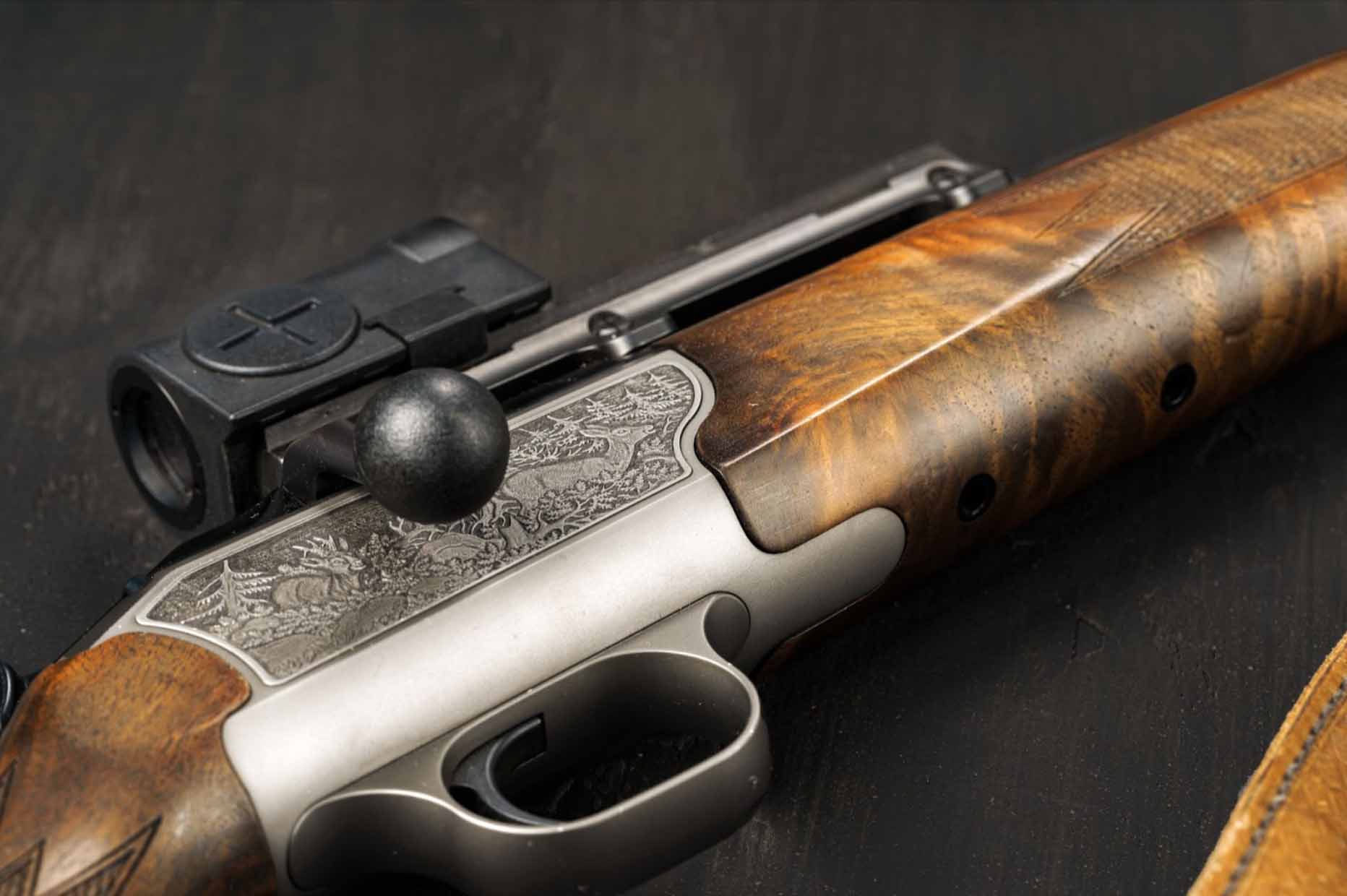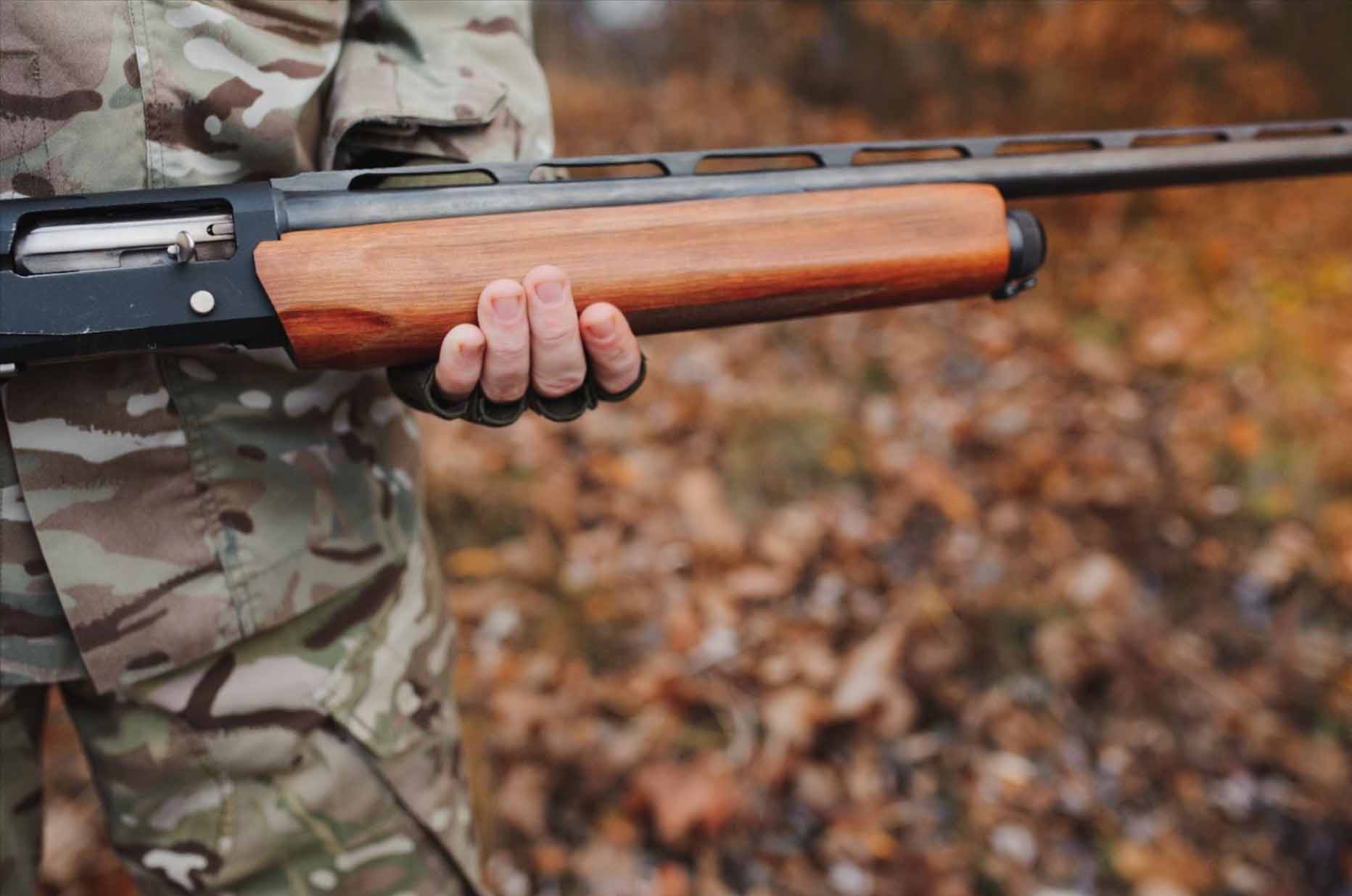Jun 27th 2024
Upgrading the Stock of a Rifle - What You Need to Know
Upgrading the Stock of a Rifle: What You Need to Know
Upgrading the stock of a rifle can dramatically transform your shooting experience. It enhances accuracy, boosts comfort, and elevates the overall aesthetics of your firearm, making it uniquely yours. Before you start the upgrade process, it's essential to understand the benefits and critical considerations to ensure you make the best choice for your needs.
What Is the Stock of a Rifle?
The stock of a rifle is its backbone, supporting the action and barrel while ensuring stability, accuracy, and shooter comfort. It distributes recoil, improves handling, and affects the rifle's weight and balance. A well-chosen stock transforms the shooting experience, making it more comfortable and practical.
Types of Rifle Stocks
Choosing the right stock type is essential for enhancing your shooting experience. Every kind of rifle stock offers unique benefits and considerations. Understanding these can help you select the best option for your needs.
Traditional Wood Stocks
Traditional wood stocks provide a classic, aesthetically pleasing look. They offer a natural warmth and can be customized with intricate designs. However, wood stocks are heavier and require regular maintenance to prevent warping and damage. Despite their upkeep, many shooters prefer the feel and appearance of wood.
Synthetic Stocks
Synthetic stocks are known for their durability and resistance to the elements. Made from materials like fiberglass or polymer, they are lightweight and require minimal maintenance. These stocks are perfect for shooters in harsh weather conditions. While they lack the traditional appeal of wood, their practicality is unmatched.
Composite Stocks
Composite stocks combine the best features of wood and synthetic materials. They offer the aesthetic appeal of wood with the durability and lightness of synthetic materials. Although more expensive, composite stocks provide a high-quality, balanced option. Ideal for shooters who want both style and performance, composite stocks are a popular choice.
Factors to Consider When Choosing a New Stock
Selecting the right stock involves considering several critical factors. Each factor impacts the rifle's performance and the shooter's comfort. Here are the key elements to evaluate when upgrading your rifle's stock.
Fit and Ergonomics
The fit of a rifle stock is crucial for accurate shooting. An ergonomic stock ensures the rifle aligns well with the shooter's body, reducing strain during prolonged use. Proper fit improves stability and control, enhancing overall performance. Ensure the stock suits your build and shooting style.
Weight Considerations
Weight significantly impacts shooting performance and comfort, and a lighter stock is more accessible, especially during long hunting trips. However, heavier stocks can absorb more recoil, making shooting more comfortable. When choosing a stock, balance the need for mobility with the benefits of reduced recoil.
Material Durability
The durability of the stock material affects the rifle's longevity and maintenance needs. Wood stocks, while beautiful, require regular care to prevent damage. Synthetic and composite stocks offer more excellent durability and are less affected by weather conditions. Consider the environment in which you will use your rifle when selecting the material.
Installation Process of a New Rifle Stock
Upgrading the stock of your rifle involves a careful and precise installation process. Proper installation ensures the rifle functions correctly and safely. Here is a step-by-step guide to help you navigate this process.
Tools Needed for the Installation
Gather all necessary tools before starting. You will need screwdrivers, Allen wrenches, torque wrenches, and possibly a rubber mallet. Having the right tools on hand prevents damage to your rifle and smoother the process. Ensure you have a clean and well-lit workspace to work efficiently.

Removing the Old Stock
Begin by ensuring your rifle is unloaded for safety. Remove the bolts and screws, securing the old stock using the appropriate tools. Carefully detach the old stock from the action and barrel, making sure not to lose any small parts. Set the old stock aside and prepare the rifle for the new installation.
Preparing the New Stock
Inspect the new stock for defects or missing components. Align it with the rifle's action and barrel to ensure a proper fit. Some stocks may require minor adjustments or sanding to achieve a perfect fit. Make sure all contact points are clean and free of debris.
Attaching the New Stock
Position the new stock in place, aligning it with the rifle's action and barrel. Secure it with the provided screws and bolts, using a torque wrench to ensure they are tightened to the manufacturer's specifications. Over-tightening can damage the stock, while under-tightening can lead to a loose fit, affecting performance and safety.
Final Adjustments and Checks
Once the new stock is attached, check for proper alignment and fit. Ensure the rifle functions correctly by performing a dry fire test and checking the trigger pull and safety mechanisms. Make any necessary adjustments to the stock or action to ensure everything operates smoothly. Conduct a thorough inspection to ensure all components are securely attached and the rifle is ready for use.
Customization Options for Rifle Stocks
Personalizing your rifle stock can significantly enhance your shooting experience. Customization allows you to tailor your firearm to your specific needs and preferences. Here are some key customization options to consider.
Adjustable Stocks
Adjustable stocks provide enhanced flexibility and comfort. They allow you to change the length of the pull, cheek height, and sometimes the butt pad position. This adjustability is particularly beneficial for shooters with varying body types or those who share their rifles with others. Adjustable stocks can also improve shooting accuracy by ensuring the gun fits perfectly to the shooter.
Custom Finishes and Paint Jobs
Custom finishes and paint jobs allow you to express your style. Options range from camouflage patterns for hunting to bold, vibrant colors for competition shooting. A durable finish can also protect the stock from scratches and weather damage. Ensure the paint or finish is suitable for the stock material and applied correctly to avoid peeling or chipping.
Adding Accessories
Accessories such as bipods, cheek rests, and sling mounts can improve your rifle's functionality. Bipods provide stability for precision shooting, especially at long ranges. Cheek rests enhance comfort and ensure consistent cheek weld, which is crucial for accuracy. Sling mounts offer convenient carrying options, making the rifle easier to transport during hunts or competitions.
Enhanced Grip Options
Upgrading the grip can significantly improve control and handling. Textured grips provide better traction, especially in wet conditions. Some stocks offer modular grip options, allowing you to choose the best fit for your hand size and shooting style. A comfortable and secure grip reduces hand fatigue and improves overall shooting performance.
Installing Recoil Pads
Recoil pads help manage and reduce felt recoil, making shooting more comfortable. They can be particularly beneficial for high-caliber rifles. Recoil pads come in various materials and thicknesses, allowing you to choose one that best suits your needs. Installing a recoil pad can also help prevent shoulder injuries and increase shooting endurance.
Customizing your rifle stock enhances the functionality and comfort and adds a personal touch to your firearm. Choose the options that best meet your shooting needs and preferences.

Cost Considerations and Budgeting for Rifle Stock Upgrade
Cost is a significant factor when upgrading a rifle's stock. Rifle stock prices can vary widely based on materials and craftsmanship. Understanding these differences helps make a budget-friendly decision.
Price Range of Different Stock Types
Wood stocks are often more expensive than other stocks due to the high cost of quality materials and detailed craftsmanship. They offer a classic look and feel, but this comes at a premium price. Synthetic stocks, on the other hand, are typically more affordable. Made from materials like fiberglass or polymer, they provide excellent value for their durability and low maintenance.
Balancing Quality and Cost
Balancing quality and cost is crucial when choosing a stock. While high-quality stocks can significantly enhance performance and longevity, they often come with a higher price tag. However, many affordable options still need to deliver better quality. These options allow you to upgrade without overspending, ensuring you get the most value.
Where to Buy and Finding Deals
Purchasing from reputable sources ensures you receive a quality product. Look for deals from trusted retailers and consider second-hand options from reliable sources. Online marketplaces, gun shows, and local gun shops often have good deals and discounts. This approach can be a cost-effective way to upgrade your rifle while ensuring reliability and performance.
Expert Tips and Recommendations on Rifle Stock Upgrades
Gaining insights from seasoned shooters can significantly enhance your understanding of rifle stock upgrades. These expert tips provide valuable guidance to ensure you make informed decisions. Here are some recommendations from experienced sharpshooters.
Try Different Stocks Before Buying
Testing various stocks before purchasing helps you find the best fit. Visit shooting ranges or gun shops that allow you to handle or shoot different rifles. Pay attention to how each stock feels and performs, focusing on comfort, control, and accuracy. Trying multiple options ensures you choose a stock that suits your needs perfectly.
Consider Reputable Brands and Models
Opt for well-known brands and models with a proven track record. Brands like Magpul, Hogue, and Bell & Carlson are renowned for their quality and durability. Research reviews and seek recommendations from fellow shooters to identify reliable options. Choosing reputable brands ensures you invest in a high-quality product that will stand the test of time.
Regular Maintenance for Longevity
Proper maintenance is essential for the longevity of your rifle stock. Regularly clean the stock, paying attention to any dirt or grime buildup. For wood stocks, apply oil periodically to prevent drying and cracking. Synthetic and composite stocks require less maintenance but should still be checked for any signs of wear or damage.
Upgrade for Specific Purposes
Tailor your stock upgrades to your specific shooting purposes. For hunting, consider a lightweight, durable stock that is easy to carry and resistant to harsh conditions. An adjustable stock with enhanced ergonomics can provide better accuracy and comfort for competitive shooting. Customizing your stock based on your needs ensures optimal performance in your preferred activities.
Invest in Proper Fitting
An adequately fitted stock is crucial for accuracy and comfort. Consult a gunsmith or an expert to ensure the stock fits your body dimensions and shooting style. A good fit enhances control and reduces fatigue, improving your shooting experience. Investing in proper fitting can significantly impact your rifle's performance.
Legal and Safety Considerations
Understanding local laws on rifle modifications is crucial. Regulations vary widely, and some upgrades might require permits. Thorough research helps you avoid legal complications. After upgrading your stock, conduct thorough safety checks. Ensure all components are securely attached and that the rifle functions correctly. Regular maintenance is critical to assuring ongoing safety and optimal performance.
Proper maintenance after an upgrade includes cleaning and inspecting the stock and the rifle. Wood stocks require regular oiling, while synthetic and composite stocks benefit from periodic cleaning. This upkeep extends the lifespan of your stock and rifle.
Elevate Your Shooting Experience
Upgrading your rifle's stock can significantly enhance your shooting experience, offering improved accuracy, comfort, and a personalized touch. Understanding the different types of stocks and the key factors and following expert tips can help you make an informed decision that suits your needs. Proper installation and maintenance are also crucial for ensuring safety and longevity. Embrace the upgrade and enjoy the enhanced performance of your customized rifle.
Joining a local gun club can be invaluable for refining their skills. Gun clubs often provide access to shooting ranges, training resources, and a community of experienced shooters. Participating in these clubs can offer additional opportunities to test and improve your newly upgraded rifle in a supportive environment.
For more insights and information about guns, visit the Gunline Shooting blog today.

